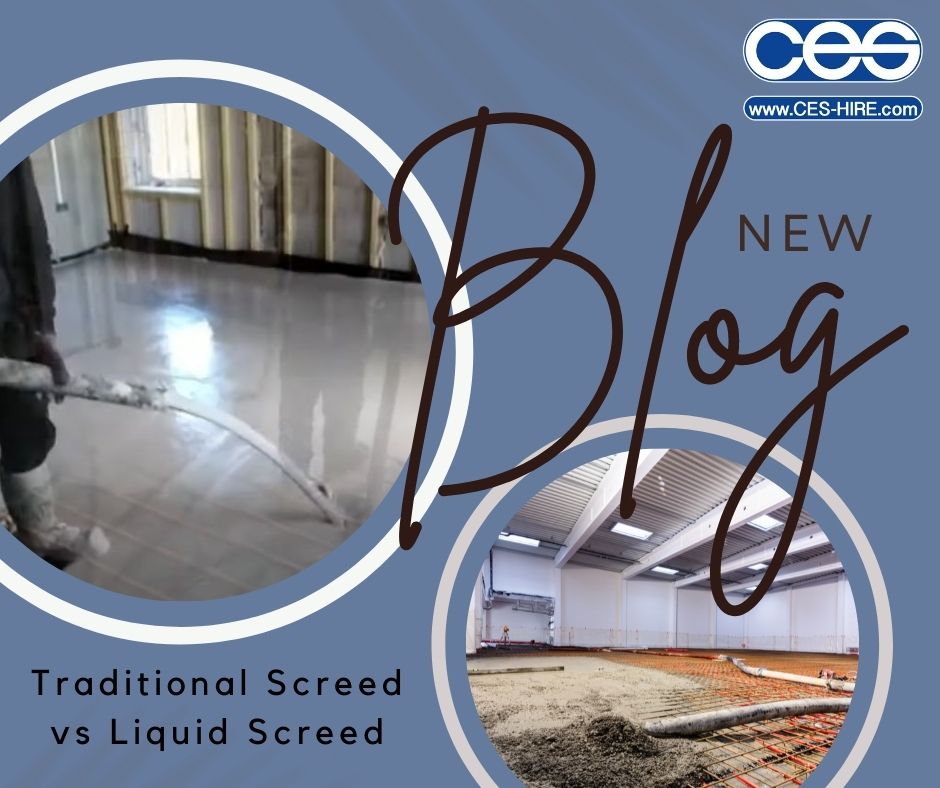What is Screed?
Screed is a material used to provide a flat, even surface over a concrete subfloor. It is not a structural element and has two purposes. Firstly, it will enable easy installation of a flooring such as ceramic tiles, laminate, vinyl, carpet or hardwood flooring. Secondly it allows efficient movement of heat transfer when fitting underfloor heating. There are two types of screeds, traditional dry screed and liquid screed; lets explore them further...
What is Dry Screed?
Dry Screed consists of a sand and cement mix. Typically made up of 3-5 parts aggregate to 1 part cement. It is known to be a more traditional method due to its widespread use over many years, in fact it is suggested that 78% of screed projects are completed using dry screed. It is mixed by hand or a paddle mixer and when mixed forms a thin concrete-like substance which will clump together when squeezed. The screed is then shovelled into the flooring area and levelled with a screeding bar or a polyurethane float.

What are the benefits of Dry Screed?
Traditional dry screed is a popular method of screeding due to its cost-effective nature in both material and labour. Whilst it is a manually-intensive process, you can self-mix the material which means you are not reliant on outside suppliers who could let you down. It is also applied by hand so you won’t need to consider the cost of machine hire. Of course, sand and cement itself is a cheap material so all in all a cheaper method of screeding. Another benefit is that dry screed can be used on not-flat surfaces that require a gradient such as a wet room.
What are the downsides of Dry Screed?
As mentioned, applying dry screed is a manual job which of course over time takes it toll on your body with the back-breaking work of shovelling and levelling by hand. Secondly dry screed is applied much thicker than liquid screed, a standard of 50mm. The drawback of this is the drying time; standard screed dries at a rate of 1mm per day so you would be looking at around 50+ days for the material to dry out and the project to be able to move forward in fitting flooring or installing cabinetry etc.

What is Liquid Screed?
Liquid screed (also known as flow, self-levelling or pumpable screed) does the same job as its solid counterpart in creating a smooth and flat surface for a final flooring finish. Liquid screed has smaller/fewer aggregates than dry screed therefore has a liquid/flowing consistency. The screed is ready-mixed and delivered to site. It is then poured rather than handled and applied using a screed pump such as a Euromair X-Pro D140/E100/D200. The liquid material fills all available space and self-levels. Flow screed can be laid as thin as 35mm.
What are the benefits of Liquid Screed?
Opting for flow screed is a great investment from a builder and customers perspective. From the builder’s point of view, it will save you in labour and time. Application is incredibly quick, pouring the material all in one go rather than shovelling bit by bit. Generally, you can pump 25m² of liquid screed in 20minutes. Since it is self-levelling it means a quick dapple bar to release the air and you’re done, no smoothing/levelling with a float required here. The easy application also means the process is sympathetic on your body as you won’t be continually stooping down or shovelling heavy material. This product also benefits from much quicker drying times and can be walked on in around 24hours and forced dried in around 7 days. This means that work can continue on a project much more quickly than with traditional screed; as they say ‘time is money’.
From the customers perspective they will save money long term due to the energy-efficiency of this material. Since the liquid will flow perfectly around underfloor heating elements completely surrounding them, it is a much more conductive material. Being laid as thin as 35mm also means less energy is utilised distributing heat which reduces your overall energy consumption. Flow screed is known to be a much stronger and more durable surface with is ideal for places with high footfall or commercial and industrial buildings.

What are the Downsides?
The initial cost is possibly the biggest downside since the material itself is more costly and of course you will need to hire a machine to pump it. However, as mentioned previously this outlay is often reclaimed in the saving in time and labour and of course the long-term energy reductions for the customer. The second downside is the reliance on an outside source firstly for the ready-mixed material to be delivered and secondly the hire of a machine, you cannot guarantee the machine you want will be available exactly when you need it.
More information
If reading this blog has piqued your interest in machine application of flow screed take a look at our range of screed pumps available for hire or purchase. We’re always happy to help or advise so if you’re new to machine application please give us a call on 01494 715472. Finally, if you’re ready to go with your screed pump but need a little more information take a look at our blog which will give you our tips to achieve the best results with flow screed.



